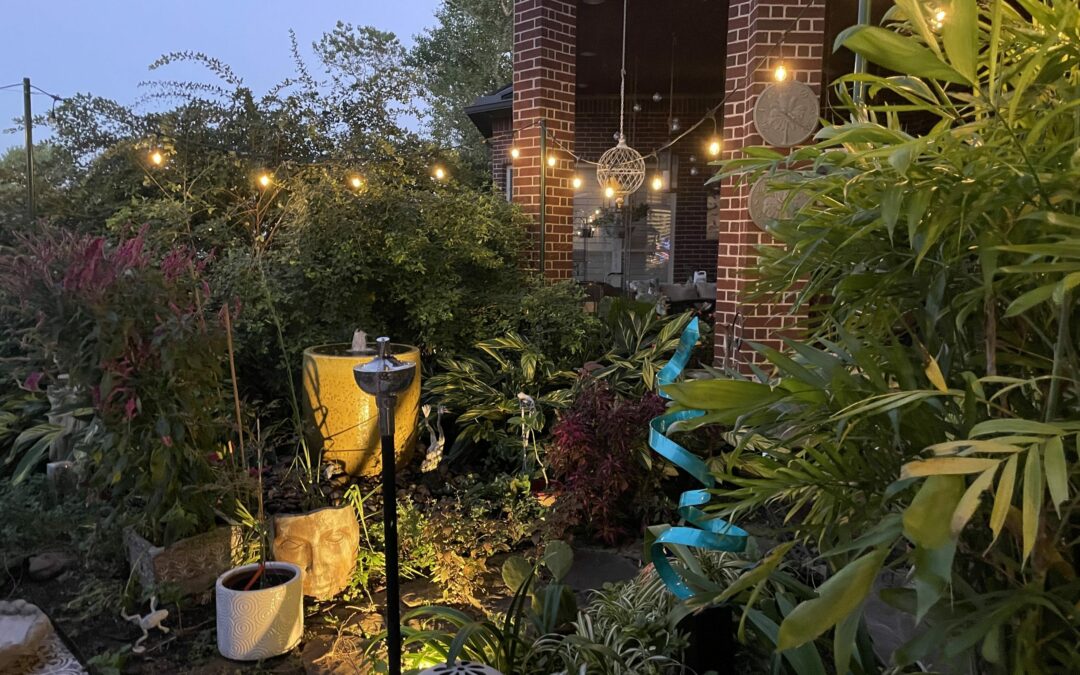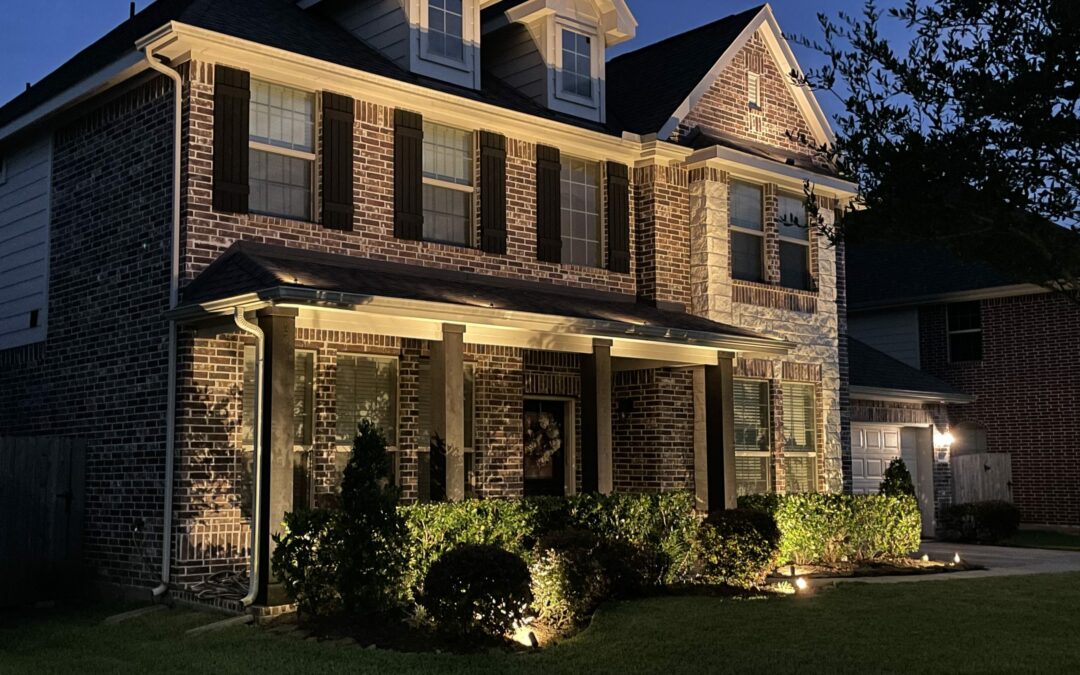
by AM Garden Team | Nov 1, 2021 | Color Changing Lights, Hardscape Lighting, Landscape Lighting Services, Moonlighting Effect, Pathway Lighting, Shadowing Effect
Wondering whether or not to upgrade or add to your existing outdoor / landscape lighting?
Do you have an older lighting system that either does not work very well or not at all? LED technology has advanced in a significant manner over the last five years. As one example, in 2020, scientists even developed a technique that allows for a single LED to produce all three primary colors, which allows the manufacturers full-spectrum, multi-color lights! Imagine having the ability to change the color of your lights, via a mobile application, based on the season of a special day. IE. Christmas colors, blue for law enforcement support, pink for valentines day, etc. LED technology is a great option for exterior lighting. As opposed to traditional halogen light systems, LED has lots of benefits, including energy efficiency, durability, low cost, and low maintenance.
But I have a 120-volt system. Can I upgrade to LED?
120-volt systems are a great alternative for commercial applications, where several hundred feet of coverage is required. If you currently have a 120-volt system, consider this: Each of those bulbs are consuming approximately 60 watts of power, whereas an average LED fixture will consume only 7 watts. And, if your system has antiquated Halogen bulbs, you could expect to use 80% less energy with LED technology. Also, a typical LED lamp has a life expectancy of approximately 45,000 hours. To put that into perspective, if you have your LED system turned on every night, for eight hours a day, you could expect these bulbs to last 15 years, or longer!
What can I expect LED maintenance to cost?
Regular maintenance, usually every one to two years, is recommended to avoid costly repairs. We offer a free one-year maintenance plan at Alexander Michaels Garden, Landscape, And Outdoor Lighting. We will check your system bi-annually forbad bulbs, overgrown vegetation, transformer connections, and wire that has become unburied. All outdoor lighting systems will require maintenance, but LED will require less maintenance and repair over the years.
Do you want your outdoor lighting system updated or retrofitted?
The experts with Alexander Michael’s Garden, Landscape, and Outdoor Lighting are here for you! Call us at 832-515-8240, fill out our online Contact Us Form, and let us provide you with a free design consultation and proposal. Check out our gallery recent projects here.

by AM Garden Team | Oct 18, 2021 | Landscape Lighting Services, Moonlighting Effect, Pathway Lighting, Shadowing Effect
Alexander Michael’s Garden, Landscape, And Outdoor Lighting take pride in our knowledge and experience with the different techniques for outdoor lighting. We use our expertise to employ each of these techniques to achieve the most effective results. Our design process is much more than placing a bunch of accent fixtures around your home and calling it a “design”. We consider our customer’s lighting objective, the size, and placement of landscaping, the color scheme of the home, the size of the trees, and the overall size of the property.
The two most common design flaws that I have observed are:
- Incorrect placement of fixtures; In particular, the incorrect aim of the fixture. Most fixtures have lamps (bulbs) that come in a variety of spread widths, from 15 degrees to 120 degrees! The correct spread should be considered when designing the layout and overall lighting objective.
- Every square inch of your landscape or home does not need to be illuminated. An effective design will have layers of lighting, highlighting focal points of the property. So, of the 8 primary lighting techniques, the following are my favorite: (We will cover other techniques in future articles)
Shadowing Effect
With the proper fixture placement and the correct light spread, the shadowing effect is a dramatic look. Not only will the subject plant or bush be illuminated, but the shadowing of the plant will cast a shadow onto the backdrop behind the plant. Palm trees are a great tree to utilize this effect. The placement of fixtures and correct lamp spread is critical with this technique. I’ve included pictures of this technique at the end of this article.
Moon Lighting
My absolute favorite! This technique is not for the installer who is afraid of heights, as it requires climbing into the canopy of a large tree. We use a wide beam specialty fixture that simulates moonlight with the shadow of the canopy branches casting onto the ground below. We always use climbing safety gear. This type of installation brings me back to my childhood tree-climbing days! The approach is straightforward. It also requires a couple of conditions:
-
- The tree should be large, with a wide canopy.
- There MUST be a significant branch pattern from the middle of the canopy to the ground. It’s important that the fixture is installed high enough in the tree to allow the light to filter down through limbs and branches to create this shadowing.
Path Lighting
Path Lighting is an effective way to tie the lighting design together I recommend using a staggard pattern alternating sides of the pathway. Remember though, you DO NOT want single-stemmed pathway lights installed in grassy areas, as whoever mows your grass is likely to destroy the fixture. There are several fixture choices that will alleviate this potentially costly issue, including larger bollards and low-profile fixtures.
Click Here to Contact Alexander Michael’s Garden, Landscape, and Outdoor Lighting to schedule your free design consultation today.







